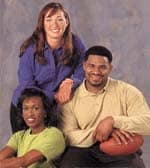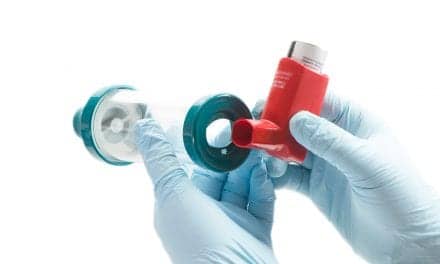Clinical know-how coupled with financial support result in a unique treatment model.
Like many great ideas, the unique business model of the NorthStar Therapy Center in Bellingham, Wash—a combination of an outpatient respiratory therapy center and full-service sleep clinic—came about nearly by accident.
Christopher Mathews, LRCP, president and CEO of NorthStar, was running a consultancy practice that helped skilled nursing facilities with respiratory care when he noticed a lack of pulmonary rehabilitation services in his area. He was in contact with two financial backers, a married couple, one of whom was suffering from lung disease; and the three agreed they were in a position to fill the community’s gap in services.
“We just saw the need in outpatients who didn’t really have anywhere to go between the doctor’s office and the hospital,” Mathews says. “So we brought my clinical expertise and background together with their financial backing and business background and started pulmonary rehabilitation.”

About 6 to 8 months into providing these services, the group realized there were many people who were more acute than “classic” pulmonary rehabilitation patients, but still needed outpatient management, Mathews says. He explains that NorthStar’s medical director, who was a member of a large pulmonology group, started bringing more and more patients who required ongoing treatment—beyond what the physician could provide—to NorthStar.
“So we started doing intervention plans—bronchiectasis intervention, asthmatic intervention, COPD plans—in which we would come in and, instead of a once- or twice-a-week type of rehabilitation plan, we would [work with the patients] every day: observation, intervention, treatment, management, instruction, and just being a pair of outside eyes and ears for their physicians,” he says. “Then we formalized these plans with therapist-driven protocols and treatment protocols such that physicians came to understand exactly what we were going to do in a given situation. We would write orders and establish treatment plans and carry those out on less than 5 hours’ notice, and physicians could literally send a patient straight from their office.”
This, he says, “expanded out into more broadly ranging outpatient respiratory therapy, in the sense that we mirrored a lot of things therapists were doing in the hospital…under a medical directorship here.”
In this way, NorthStar has developed in the last 3 years into a successful comprehensive outpatient rehabilitation facility (CORF), something Mathews believes would never have happened if his investors did not have a personal interest in the business. “If one looks at pure Medicare numbers, [it is clear that one] would never be able to attract an outside investor with that kind of money,” he says, explaining that for them, “it was rather like divine intervention, bringing me together with this couple who had a bigger interest than just making money.”
Getting to Sleep
Mathews believes the business would not have succeeded if they had not added a sleep clinic to the facility, however. “Sleep, too, sort of walked through the doorway of need,” he says.
He explains that NorthStar realized early on that in order to provide their services—often offering treatment pro bono because of Medicare hurdles—the business would need to expand into more services to diversify its payor base. Sleep seemed like an ideal area to go into: There was an obvious community need, and NorthStar’s pulmonologist was well versed in the specialty. “We felt from a business perspective we were poised to provide it,” Mathews adds.
Sleep care, he says, serves two purposes. First, “there is a lot of crossover of respiratory patients, pulmonary patients, and sleep apnea patients—we all know that. Certainly from a business model, it was very appealing because we could utilize respiratory therapists in a large capacity, especially on the treatment side. In addition, the payor ratio is inverted as one goes from a pulmonary business—where there is an 80% Medicare base and a 20% commercial base—to a sleep business—20% Medicare and 80% commercial. This stabilizes the flow and stabilizes all the changes Medicare throws at you.”
Deborah Sankey, RRT, RPSGT, a sleep technologist for NorthStar, says she has seen the benefits of providing both respiratory and sleep care first-hand. By having the services together, people “feel they’re getting all around good care from the whole clinic,” she says. “And if they have good service on the one side, they won’t be so hesitant about being treated on the other.”
The sleep clinic is currently in the process of becoming accredited by the American Academy of Sleep Medicine.
A Successful Model
For all of these reasons, NorthStar has not only survived as a CORF, it is ready to expand. It has a 16-member staff that includes RTs, physical therapists, sleep technologists, and administrative staff, all of whom work in a 4,500-square-foot building. They are currently expanding the facility to 5,000 square feet and adding four beds to the sleep clinic (bringing it up to six), Mathews says. In May, they will also have an in-house pulmonologist on the staff. “Until now, we’ve had a remote medical directorship,” he says. “Now we’ve hired a full-time boarded pulmonologist who will be purely dedicated to NorthStar.”
Despite its success, however, Mathews says NorthStar has “been thrown some curveballs,” especially from Medicare. In principle, the CORF model is great, he says, but until there is a national definition of pulmonary rehabilitation, facilities like NorthStar will run into blockades in services they can provide. “One can drive 100 miles south of here and have no problems [with some services], and then come up here and [Medicare] puts on the brakes completely and puts [the plan] under full review,” he says, adding that he has been working closely with local legislators to push for a national definition of pulmonary rehabilitation.
Getting the Word Out
As for the community it serves, NorthStar could hardly be more successful. “We grew from a physician base of [referrals] in the first year from about 14 or 15 physicians, and now I think 96 physicians in our community out of 140 refer to us,” Mathews says. “So we have very good physician-based support, and our patient-based support is just huge.”
The uniqueness of the business model has also drawn industry attention. When Mathews prepared to speak at the American Association for Respiratory Care’s 2004 International Respiratory Congress, he expected only a handful of conference-goers to attend. Instead, close to 200 people showed up, and he says that he has been “flooded” with e-mails ever since.
Mathews says there has been interest because there are no other facilities quite like NorthStar. “Basically, we’re a full sleep disorder center with an integral physician tied to it, and a full outpatient respiratory therapy management center,” he says. “I think it’s unique.”
It is also a model that could work well for others, he says. “Whether it’s the CORF model or a physician office model,” it is just a matter of “RTs aligning themselves with a physician and building treatment around this kind of model.”
It is a way of thinking outside of the box that Mathews wants to see more of in the industry. “We have this built-in construct from day one when we leave school that our only options are home care or hospital work,” he says. “I’d like to see us broadening our belief systems so we start opening up options and new avenues for ourselves.”
Sarah Schmelling is a contributing writer for RT.










